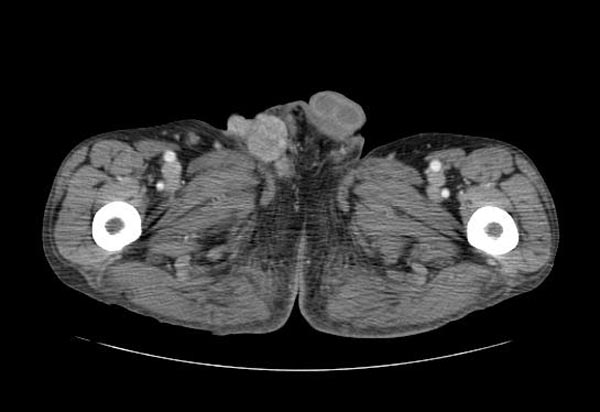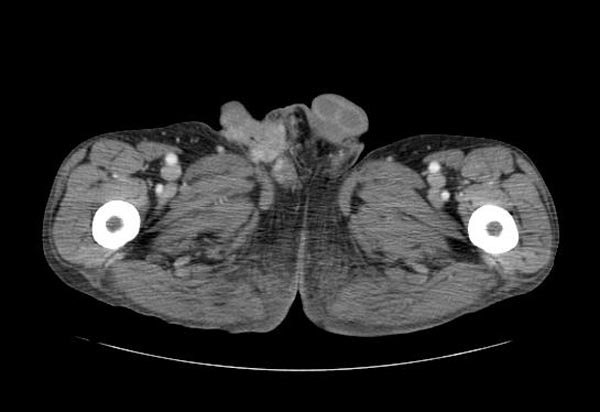Dermatofibrosarcoma protuberans: Difference between revisions
No edit summary |
Kiran Singh (talk | contribs) No edit summary |
||
| Line 1: | Line 1: | ||
__NOTOC__ | __NOTOC__ | ||
{{SI}} | {{SI}} | ||
{{CMG}} | {{CMG}};{{AE}} {{KS}} | ||
==Overview== | ==Overview== | ||
'''Dermatofibrosarcoma protuberans (DFSP)''' is a rare [[neoplasm]] of the [[dermis]] layer of the skin, and is classified as a [[sarcoma]]. In many respects, the disease behaves as a [[benign]] [[tumor]], but in 2-5% of cases it can [[metastasis|metastasize]], so it should be considered to have [[malignant]] potential. | '''Dermatofibrosarcoma protuberans (DFSP)''' is a rare [[neoplasm]] of the [[dermis]] layer of the skin, and is classified as a [[sarcoma]]. In many respects, the disease behaves as a [[benign]] [[tumor]], but in 2-5% of cases it can [[metastasis|metastasize]], so it should be considered to have [[malignant]] potential. | ||
Revision as of 19:13, 24 August 2014
Editor-In-Chief: C. Michael Gibson, M.S., M.D. [1];Associate Editor(s)-in-Chief: Kiran Singh, M.D. [2]
Overview
Dermatofibrosarcoma protuberans (DFSP) is a rare neoplasm of the dermis layer of the skin, and is classified as a sarcoma. In many respects, the disease behaves as a benign tumor, but in 2-5% of cases it can metastasize, so it should be considered to have malignant potential.
Over 95% of DFSP tumors have the chromosomal translocation t(17;22). The translocation fuses the collagen gene (COL1A1) with the platelet-derived growth factor gene. The fibroblast, the cell of origin of this tumor, expresses the fusion gene in the belief that it is collagen. However the resulting fusion protein is processed into mature platelet-derived growth factor which is a potent growth factor. Fibroblasts contain the receptor for this growth factor. Thus the cell "thinks" it is producing a structural protein, but in fact produces a self-stimulatory growth signal. The cell divides rapidly and a tumor forms.
Treatment is primarily surgical, with chemotherapy and radiation therapy sometimes being used.
There is clinical evidence that imatinib, which inhibits PDGFB, may be effective for tumors positive for the t(17;22) translocation.
CT images demonstrating a dermatofibrosarcoma protuberans in the right groin


